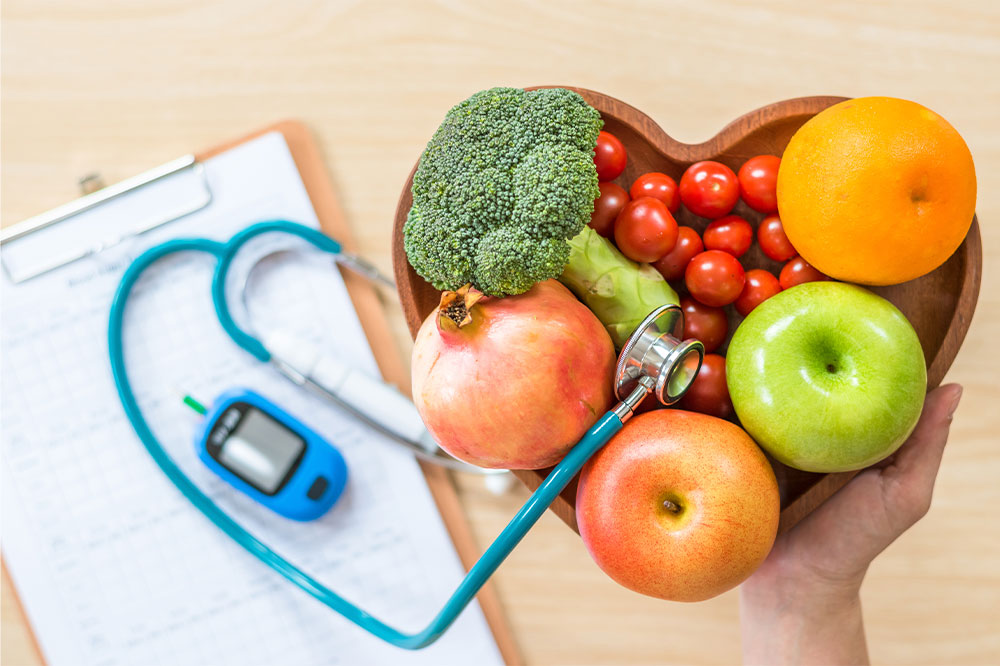3 useful fruit intake tips for people with diabetes

People with diabetes are often advised to avoid sweet foods as they can increase blood sugar levels. But not all sweet foods are bad. While refined sugar is a culprit, patients can add foods with natural sugar to their nutrition plan, like fruits. However, those with high blood sugar need to be cautious and follow specific rules when opting for fruits. Here are some fruit intake tips for diabetes patients:
Consider where the fruit came from
This does not mean finding out where the fruit was farmed. Tracking where the fruit came from involves understanding how it was processed and stored before it arrived in stores. Was it fresh, frozen, canned, or powdered? Each method of storing and processing fruits can impact diabetes and overall health differently.
Studies have shown that fresh fruits have little to no negative impact on blood sugar. The same goes for frozen fruits or those preserved in their own juices. However, canned fruits can be harmful. Fruits in supermarkets packed in jars or cans are preserved commercially with preservatives. And most preservatives use sugar as the main ingredient. It is advisable to stick to fruits without added sugars and preservatives.
Check the fruit’s glycemic index
Glycemic index, or GI, is a rating given to every food, including fruits, depending on the speed at which it can increase blood sugar levels. The food’s digestion and absorption rate are vital in determining its GI score. Fruits with a high GI are responsible for the speedy increase in blood sugar. The spikes and drops that result from these foods are quick and steep. However, foods with low to medium GI scores can help better control blood sugar. It is therefore essential to know which foods have high GI scores and which have low to moderate scores.
Some fruits people with diabetes can safely include on their menu are avocados, apples, peaches, pears, berries, cherries, and grapefruit. These fruits have a low glycemic index and are safer than most other options. Mango, banana, orange, grapes, and figs have moderate GI scores and can be occasionally added to the meal plan.
Keep an eye on portion size
Diabetes patients are often advised to fill half their food plates with vegetables, preferably non-starchy ones. In addition, experts say that most adults with this condition can have multiple servings of fruits and vegetables daily. This means that even when all three meals are supplemented with fiber sources from vegetables, there is still room for fruits on the menu.
However, patients are advised not to have a plateful of fruit in one go. Fruits are safe for diabetics only when proper serving sizes are followed. Forgoing portion control can land patients in trouble and lead to high blood sugar. Generally, one serving size equals one fruit of the medium size. One cup is an acceptable serving size for smaller fruits like berries and cherries.
Patients can consult a doctor to know other ways to include fruits in their meals. Besides a nutrition plan, health experts recommend one or more of the following treatment options for diabetics to help better manage their symptoms:
INVOKANA®
INVOKANA® is a popular once-a-day oral treatment for managing type 2 diabetes. It works by flushing out excess sugar through urination and preventing the sugar from getting reabsorbed into the body. However, the treatment should be accompanied by exercise and a healthy nutrition plan for the best results. INVOKANA® may also be used to lower the risk of cardiac conditions like stroke and slow down the progression of kidney disease in individuals with type 2 diabetes.
GlucoTrust
GlucoTrust is among the most common supplements for diabetes. It has natural ingredients and is to be used once a day. Besides promoting healthy blood sugar levels, the supplement revitalizes the patient’s energy levels, improves sleep quality, and helps with blood circulation. Patients who use GlucoTrust consistently may also have lesser junk food cravings.
Dexcom G6
Continuous Glucose Monitor (CGM) devices have recently gained popularity. Dexcom G6 is a well-known CGM that patients can rely on to check blood sugar levels. Unlike fingerstick tests, it does not require pricking the finger. Instead, a tiny sensor is inserted just beneath the skin surface to monitor sugar levels continuously in real-time. Dexcom G6 was among the first CGM devices with smartphone compatibility. A three-pack set lasts around a month, as one CGM sensor can be used for ten days.
Insulin therapy
Insulin therapy is usually recommended for individuals with type 1 diabetes because their pancreas cannot produce sufficient insulin, the hormone responsible for converting blood sugar into energy. They are given insulin shots, mainly before meals, to help keep blood sugar levels under control. The type of insulin is determined based on the patient’s glucose levels. The common types are rapid-acting and short-acting insulin, which can be administered using pens, pumps, and other devices.
KERENDIA
Those with diabetes are at an increased risk of chronic kidney disease or CKD. The FDA has approved KERENDIA to treat this condition. It is an oral treatment that helps treat CDK and reduce the risk of kidney failure. It also helps lower the risk of heart failure and heart attacks. Low sodium, low blood sugar, high potassium levels, and allergic reactions are some side effects of KERENDIA.






